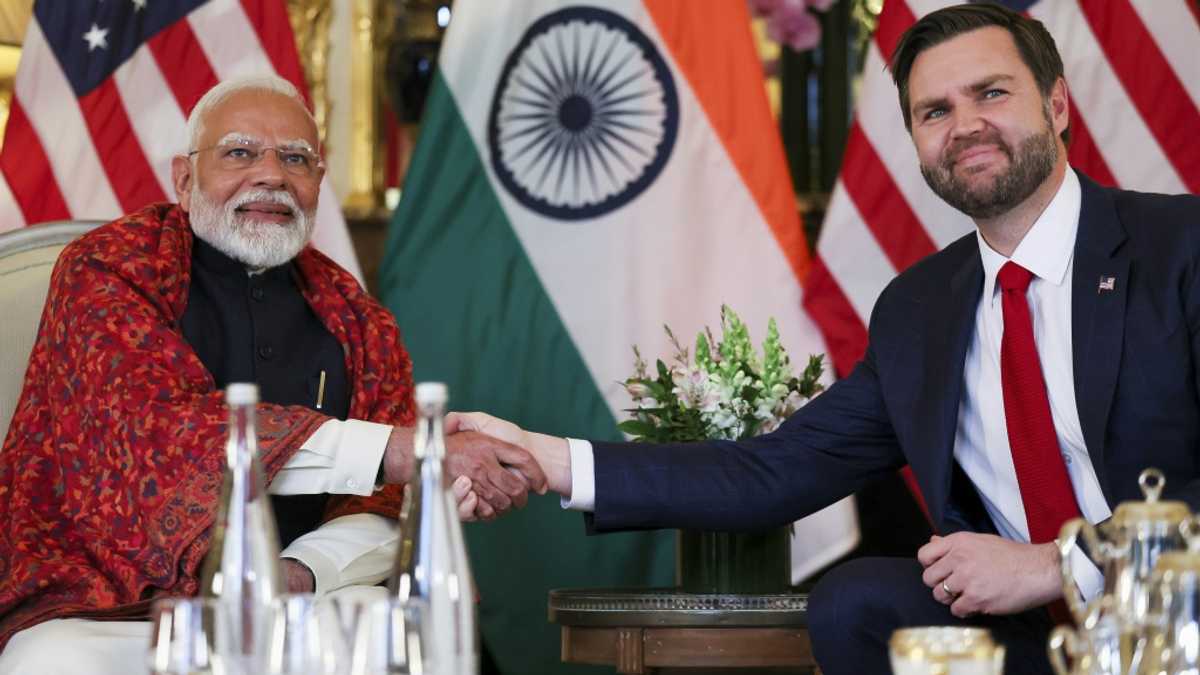Kanupriya Dhingra: "Daryaganj's magic lay in its unpredictability"
Jan 21, 2025 07:51 AM IST
How did you come to research and write this interesting monograph on the history and culture of Old Delhi’s Daryaganj Sunday Book Market?

My research on the Daryaganj Sunday Book Market began with a personal fascination that evolved into a scholarly pursuit. During my MPhil research on love letter writing manuals in Old Delhi, I encountered the vibrant yet overlooked world of informal book markets. This curiosity deepened during my PhD at SOAS, where I focused on the Daryaganj Sunday Book Bazaar. Initially, I sought to understand how such markets functioned within informal economies. Over time, I realised they were also spaces of storytelling, serendipity, and community.
Studying this market required a combination of archival research and ethnography. I spent months observing the rhythms of the bazaar — how it transformed from empty footpaths into a book bazaar every Sunday — and engaging with booksellers and buyers to document their lived experiences.
While this work published by Cambridge University Press serves as a short ‘minigraph’, I am hoping to publish a more expansive book with a trade publisher.

How did the old book Bazaar become a serendipitous space for book lovers and book sellers and those visiting from other places?
Daryaganj’s magic lay in its unpredictability. You’d enter without a plan and leave with a rare first edition or an out-of-print gem. The concept of “double chance encounters” defined this space: booksellers sourced their stock from eclectic channels like scrap dealers, discarded private libraries, or publisher leftovers. Buyers, in turn, stumbled upon treasures they didn’t know they needed. Vendors mastered “stall sajana,” arranging books creatively to attract the passersby, turning the chaos into a charm. Unlike a bookstore’s order, Daryaganj’s sprawling layout made every visit an adventure — where a student hunting for cheap textbooks might leave with an unexpected collection of Urdu poetry, an old fashion magazine, or tour guide of Mumbai from the 1900s.
The monograph mixes personal narratives, reportage, and academic analysis to tell the story about the evolution of this informal book market. How did you arrive at this format?
The approach I took in my research reflects the multifaceted nature of the Daryaganj Sunday Book Market. Combining ethnography, rhythm analysis, interviews, reportage, and academic analysis was essential to understanding and representing the market’s complexity. By blending these elements, I aimed to show that the Daryaganj Sunday Book Bazaar is not merely a commercial space but a microcosm of Delhi itself — vivid, messy, and brimming with possibility.
What were some of your key findings?
One of the key discoveries during my research was that there is no single, definitive story of Daryaganj Sunday Book Market. The bazaar is a mosaic of narratives, shaped by the perspectives of diverse stakeholders. My sources ranged from historians and journalists who traced its Mughal-era roots as Faiz Bazaar, to booksellers who recalled its early days near the vanished Lohe Ka Pul (Iron Bridge) and its transformation into a specialised book market in the 1960s.
Booksellers shared deeply personal stories about their attachment, or lagaav to the trade — some describing decades of sourcing rare books, while others revealed the survival strategies behind selling pirated “D-books.” These stories illuminated how Daryaganj operates as a parallel book bazaar, running alongside formal publishing and distribution networks. Readers, from casual visitors to the shauqeen buyers, painted vibrant portraits of discovery, highlighting the diverse reading needs in Delhi — from affordable textbooks to rare, out-of-print titles.
The state’s role and vocabulary also played a crucial part in shaping the bazaar. Officially recognised as a “natural bazaar” — a space where buyers and sellers interact with minimal institutional intervention — Daryaganj’s informality is paradoxically formalised in policy language, underscoring its cultural and economic significance. This classification highlighted its unique position within the city’s urban fabric, balancing the chaotic charm of informal trade with state oversight.
This multiplicity of voices and findings revealed that Daryaganj was not just a market but a dynamic, living entity, constantly reshaped by its patrons, vendors, and the city itself. Each perspective added a layer to its identity, making it clear that Daryaganj’s story is as diverse and complex as the books it holds.
The old book Bazaar was relocated to a gated compound called ‘Mahila Haat’ in 2019. How did the book sellers and buyers respond to this relocation?
The relocation of the Daryaganj Sunday Book Market to Mahila Haat in 2019 brought significant changes. Previously, the market thrived on the footpaths of Netaji Subhash Marg and Asaf Ali Marg, an open, chaotic space where books were displayed on the ground or heaped in piles, fostering serendipitous discoveries and lively, unstructured interactions. At Mahila Haat, while the market retained its open-air setup, it moved into a more regulated, gated compound with numbered stalls and defined boundaries.
The responses to this move were mixed. Some booksellers appreciated the perceived “glamour” of Mahila Haat, which came with dedicated vendor spaces and a more polished appearance. However, others felt that the transition stripped the bazaar of its vibrancy.

What were some interesting life stories you encountered during your interviews with book sellers here?
The vendors of Daryaganj Sunday Book Market are its living archives, each carrying a history that intertwines with the bazaar’s evolution. Among the stories I encountered, Qamar Saeed’s stood out. Known as the “King of Daryaganj,” he proudly showed me an official-looking document marking the day he secured his place in the market. “On this day, I was sure that this was going to be my way of life,” he recalled, reflecting on a journey that has spanned over four decades. Many vendors like him preserve their tehbazaari parchis — temporary permits to occupy the footpath — not merely as bureaucratic necessities but as cherished tokens of their attachment to the bazaar. One vendor nostalgically mentioned his parchi from 1982, the year of the Asian Games, which he planned to laminate for posterity.
The pathways that led booksellers to Daryaganj were as diverse as their stock. Some inherited the trade through familial networks, like Mahesh Kumar, who followed in the footsteps of his uncle and brother. Others, like Divakar Pandey, found their way by chance. After failing to qualify for the Indian Army due to a medical condition, Pandey worked with publishing houses before settling into the market. Similarly, Surendra Dhawan, once a full-time photographer, turned to book selling for stability and has since become a sought-after vendor of imported novels.
What united these individuals was their lagaav — an emotional bond with the market. For them, book selling wasn’t just commerce but a labour of love. Asharfi Lal Verma put it succinctly: “Hobby bhi hai, roti bhi hai” (It’s both a hobby and a livelihood). Interestingly, the vendors also drew clear distinctions between themselves and other types of street hawkers, viewing their trade as more “sophisticated.” For instance, the owner of Masooma and Co. used the bazaar to sell discounted Urdu titles imported from Pakistan, blending his role as a publisher with that of a vendor. Even vendors of pirated books, often viewed sceptically by traditional sellers, contributed to the bazaar’s dynamic ecosystem, reflecting how the market adapted to changes in technology and consumer demand.
These stories highlight the resilience, adaptability, and deep emotional connection that have sustained the vendors through civic challenges, economic shifts, and the eventual relocation to Mahila Haat.
You also write about the women booksellers of this informal book market. How significant was their contribution to its overall functioning and did they bring any unique perspective to the bazaar?
Women booksellers at the Daryaganj Sunday Book Market, though a minority, provide a unique lens into the gendered dynamics of this traditionally male-dominated space. Out of the 258 vendors officially registered, only eight are women, most of whom work in lieu of male relatives. However, two notable exceptions, Asha and Vinita, have carved out independent roles despite significant cultural and structural barriers.
Asha, in her late fifties, has been running her stall of used books for decades since her husband’s passing, though she hesitates to identify as a bookseller. She often downplays her role, saying, “This business can only be run by men,” reflecting the deeply internalized cultural expectations that discourage women from claiming ownership of such professions. Despite her active involvement — negotiating with customers and managing the business — her son is recognized as the primary vendor, underscoring the gendered dynamics of public recognition.
Vinita, another independent vendor, who has now stopped coming to the bazaar, faced similar challenges. Both women embody resilience, navigating their roles amidst societal expectations. Yet, their contributions are often framed as extensions of familial duty rather than professional agency. Their stories highlight the gendered “housewifization” of labour, where women’s efforts are devalued and tied to domestic roles rather than recognized as entrepreneurial work. Their presence, while significant, challenges but does not yet dismantle the patriarchal norms that govern this community.
Majid Maqbool is an independent journalist based in Kashmir.
![]() Recommended Topics
Recommended Topics
For evolved readers seeking more than just news
Subscribe now to unlock this article and access exclusive content to stay ahead
E-paper | Expert Analysis & Opinion | Geopolitics | Sports | Games











